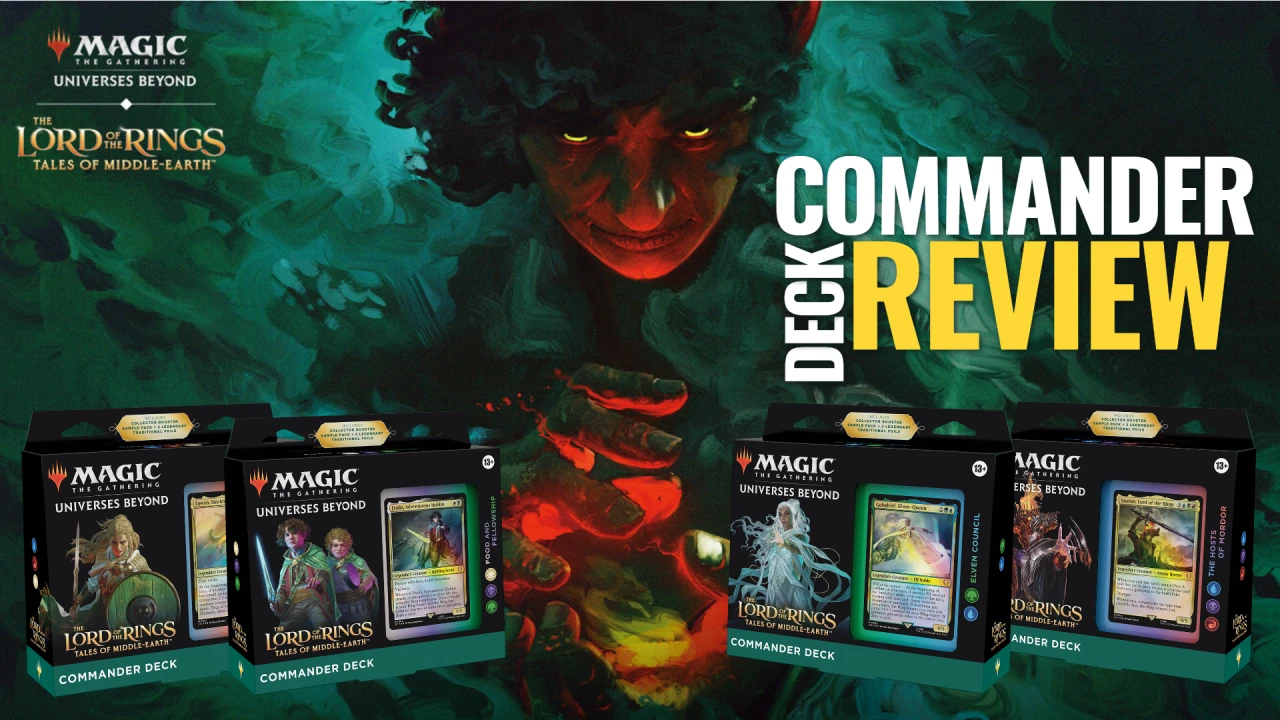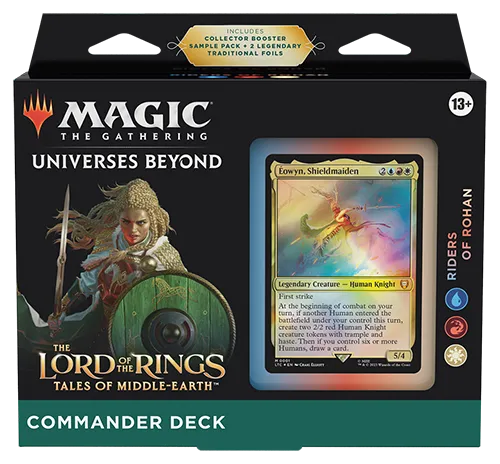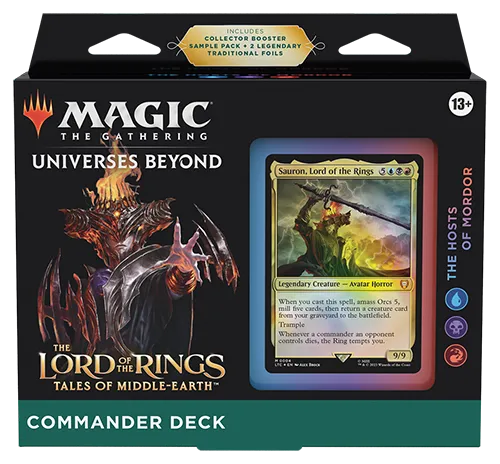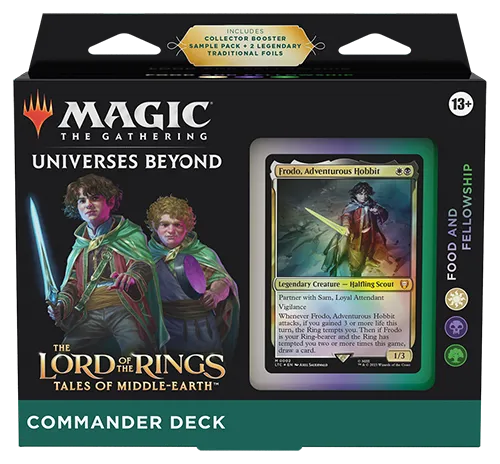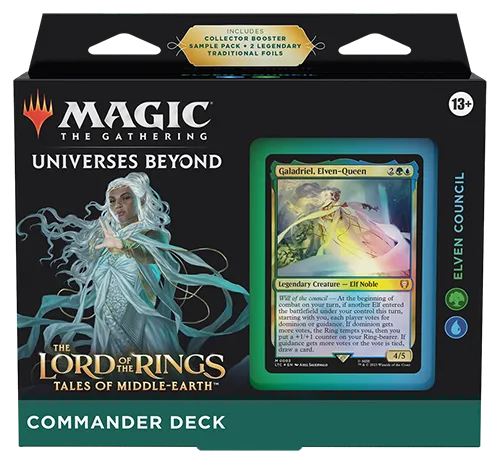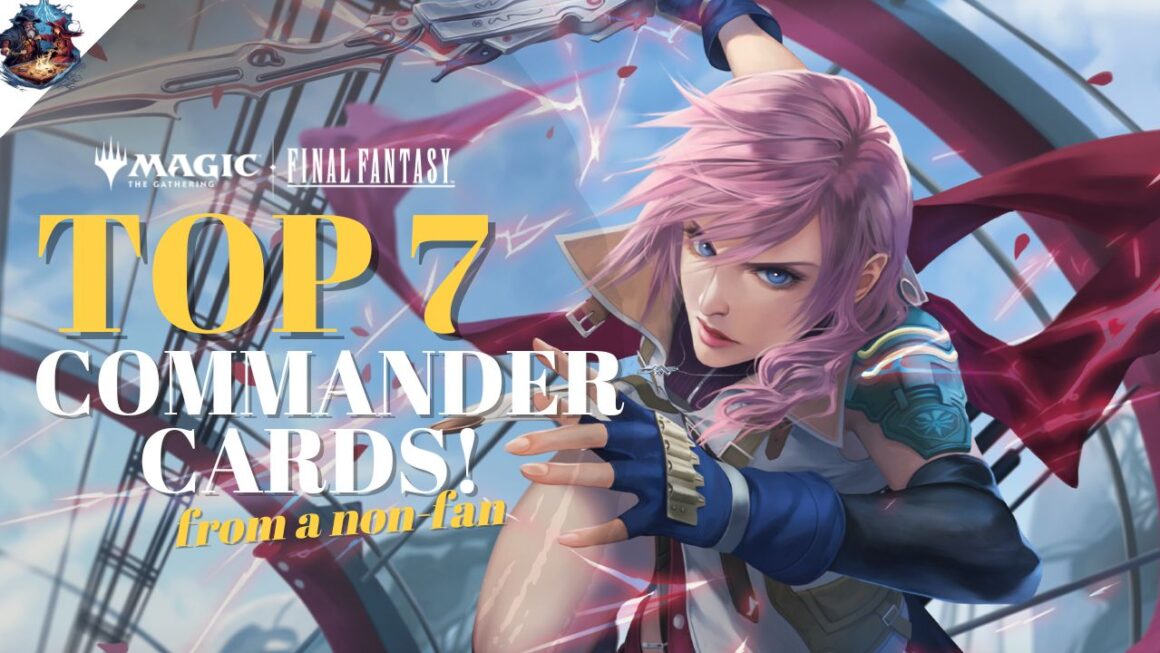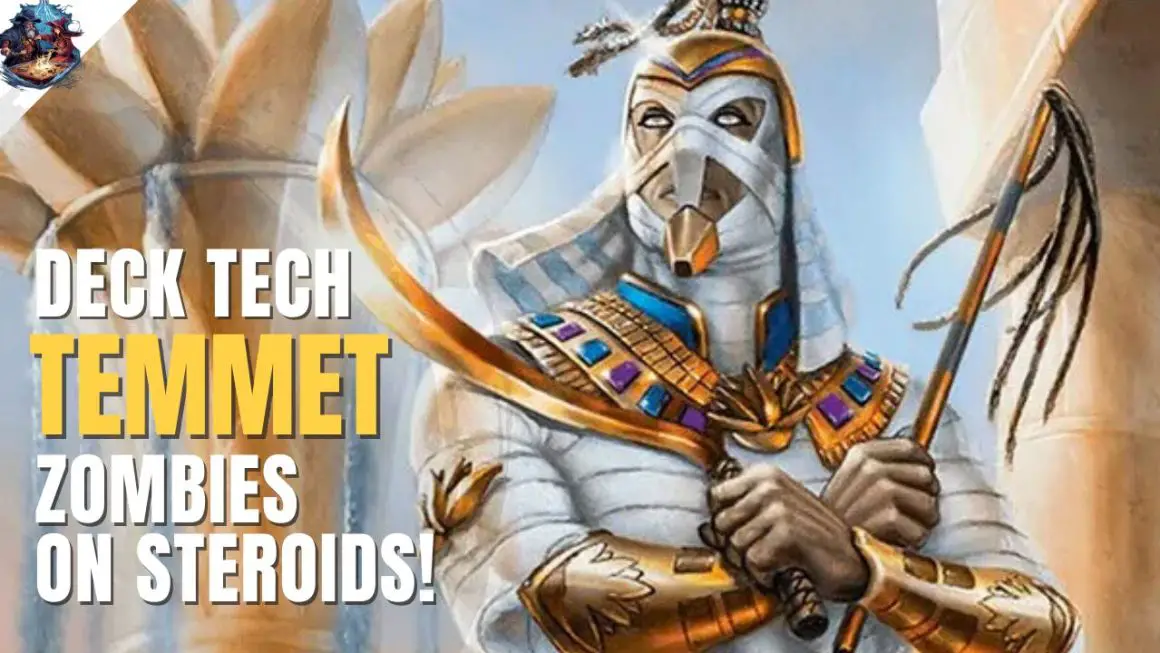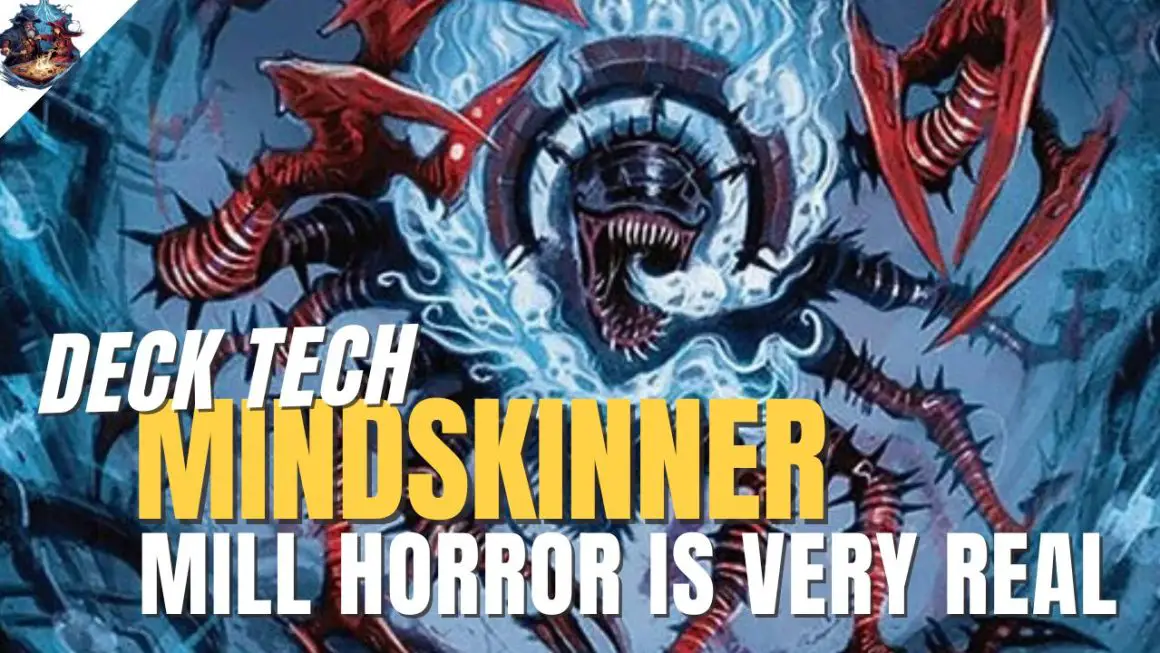I’d like to make a quick statement: I’m not a major fan of Lord of the Rings. I know it exists, I know of the memes that have come out of it, but I have not read or watched the full series to completion (blasphemous, I know.)
As such, please do understand that my review of these decks will not be considering the canon/lore-specific aspects of these characters, and rather focus on a holistic analysis of the decks according to the framework we here at Tap & Sac have been using for our EDH deck reviews.
If I happen to go overly hard on a fan-favourite commander of yours or miss out some overly flavourful text or mechanic attached to a card, I’m sorry.
Regarding financial value, I’ll also be looking at the secondary market value of all the cards in the precons. I will not be taking into account the flavour or special art of these decks. If you happen to like these decks because they use “Tolkien Creatures” instead of “Token Creatures” or maybe you just like the Gilded Goose art straight out of Untitled Goose Game, then be my guest! Your money is under your jurisdiction, and I’m only here to make your choice of deck a little easier.
Here at Tap & Sac, we’ll be rating the precons based on the following metrics:
Power Level – How does the deck fare against most modern preconstructed EDH decks?
Value – What are the reprints of value in the deck, and does the price tag of the deck justify the price of the cards within the deck?
Upgradability – How easily can a player afford upgrades to the deck? And how easily can a player increase the power level of the deck?
Beginner Friendliness – How easy is the deck to pilot? Does it utilise exceedingly complex mechanics or reference niche mechanics using very wordy cards?
Alright. Now that we’ve set the stage, here are the full deck lists for the 4 Lord of the Rings Commander decks!
Much like the Warhammer 40K precons released in 2022, these decks are part of Wizard’s Universe Beyond initiative, introducing characters not within the MTG universe through MTG Cards. This instalment of UB introduces us to the characters of the Lord of The Rings franchise, with stellar art from a wide variety of artists heavily enfranchised in LOTR artwork.
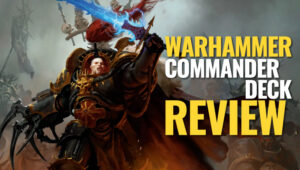
Riders of Rohan | Lord of the Rings
Overview
Helmed by Eowyn (with a fancy E), this deck provides an angle to Jeskai (red-blue-white) Humans unlike any we’ve seen prior. Using shenanigans like the Monarch mechanic, Eowyn’s triggered ability or other draw effects from cards like Humble Defector, Archivist of Gondor or Vanquisher’s Banner, the deck easily refills its hand with threats to amass a token army (not with the Amass mechanic, though) to take out your opponents.
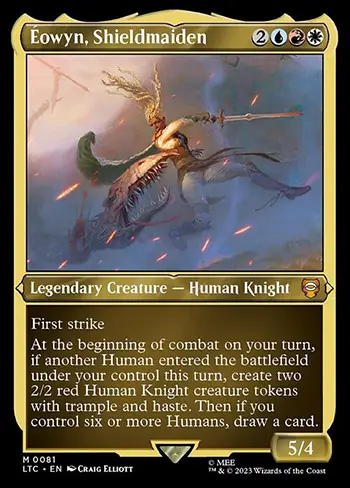
Prisoners-of-war Friends of Winota players might recognise old palsCombat Celebrant, Village Bell-Ringer and Zealous Conscripts while witnessing the same PTSD of watching 7 Beregond and Erkenbrand triggers fly onto the stack for significantly-more-than lethal.
Playability
The deck puts a spin on the humans archetype, going for a more combo-based approach to attaining lethal as opposed to the gradual growth effects used in older Selesnya human builds. Notably, losing green removes the deck’s access to the all-star Champion of Lambholt, Kyler, Heronblade Elite and Augur of Autumn/Realmwalker.
The addition of blue feels more like an afterthought from design and less from the deck-building department. Blue is present for card draw effects, but the deck simply lacks other supporting cast in blue – most of the threats come from red and white (a classic for an aggressive Humans deck). The deck could easily run on those colours, using all kinds of 1-cost cantrips for expedited card draw.
In addition, the surprising lack of easily snowball-able threats makes this deck rather weak in the late game. A single well-timed board wipe can easily set this deck back to the stone age with no discernable draw engine to speak of. A functional reprint of a card like Adeline, Resplendent Cathar/ Myrel, Shield of Argive/ Lena, Selfless Champion can easily assist in applying pressure to opponents in the early game whilst providing a defensive advantage in the late game.
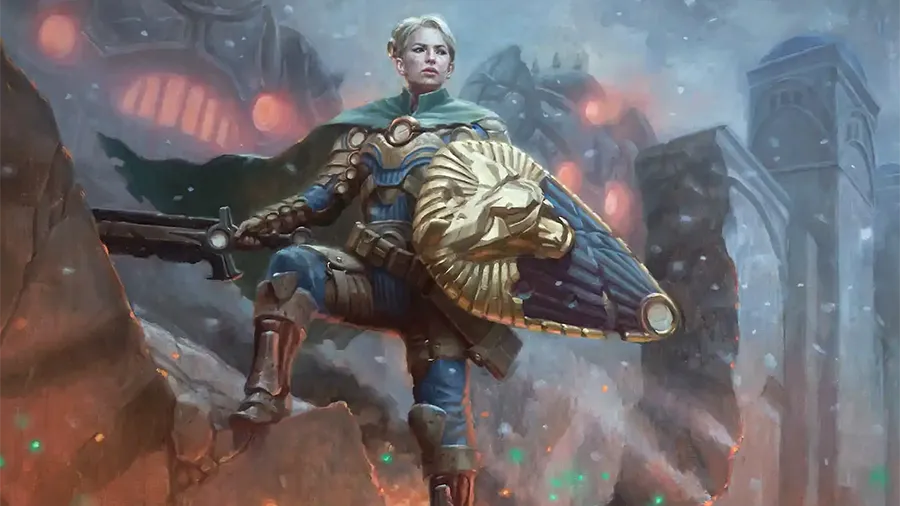
The addition of Supreme Verdict in a creature-heavy list is also exceedingly dubious. Barring its reprint value, this card remains an actively detrimental threat to the board state for such a board-centric deck. Unlike utility cards like Flawless Maneouvre or Boros Charm, this card will effectively set you back no matter the instance.
Trying to break through an enemy’s defence? Say goodbye to your attackers anyways!
Too far behind on resources? Nope. You spent your entire turn cleaning the board whilst your opponents have an entire turn cycle to rebuild.
The Monarch mechanic also feels like a lazy way to shoehorn in card draw in such an impressive deck. Why not a Bident of Thassa/Coastal Piracy/Reconnaissance Mission alternative to reward players building towards wider board states? Or maybe a Distant Melody/Keep Watch reprint? Why would you want to limit card draw to once per turn in an aggressive deck so focused on gunning down opponents before they hit a stage of attrition?
(Yes, I am aware that the Monarch encourages players to be more aggressive with combat but the hallmark of a good combat-based deck is that it shouldn’t rely solely on other players playing aggressively to eke out a victory)
The deck isn’t without merits though. An aggressive strategy with decent token generation effects means the deck likely decides the game in the first 6 turn cycles. If opponents can’t address key pieces like Gimli, Faramir or Imrahil by the time Eowyn hits the field, they’ll quickly get picked off one by one.
Value
It is nice to see our first reprinting of Combat Celebrant after the card came out in 2017’s Amonkhet. Commanding a hefty price tag of $20 for the longest time, this limited printing of the card is a unique selling point of the deck.
Oh, who am I kidding? We have to mention the 3 other big hitters – Door of Destinies, Vanquisher’s Banner and Herald’s Horn – 3 key pieces for any en-masse tribal deck. If you’re building a big army and want it done fast, these 3 cards are here for you. Door of Destinies has been priced at $22 for the longest time, with the Banner and Horn following suit at around $9 per card. Interesting pickups for tribal players, with the added benefit of a Supreme Verdict thrown in as a Pioneer staple in Azorius Control decks.
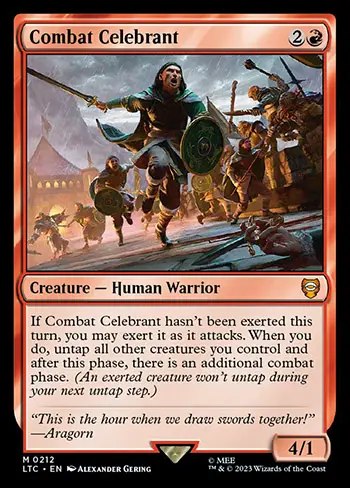
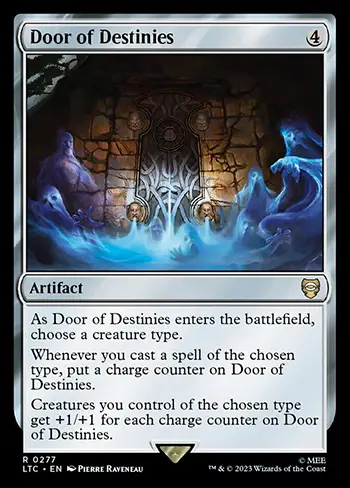
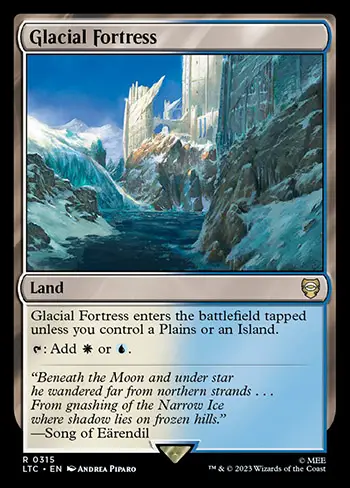
The addition of the 3 Check-Lands – Sulfur Falls, Glacial Fortress and Clifftop Retreat and Weathered Wayfarer make for a nice addition to the Jeskai Mana base. (Though I’m sad we didn’t get to see another Shivan Reef or Adarkar Wastes)
Upgradability
Oh. Where to begin? The deck’s got loads of wiggle room for better cards.
If you want to prioritise the token-generation route, consider picking up copies of Myrel, Adeline or the new card Horn of Gondor. Double up your token generation with token deck all-star Anointed Procession and Halo Fountain. (why not pick up a Smothering Tithe while you’re at it? Just for the added Mana acceleration)
If protection pieces are your next target, consider adding in Flawless Maneouver, Coppercoat Vanguard, Lena, Selfless Champion or Boromir. Each one offers an additional advantage alongside protecting key pieces from removal effects
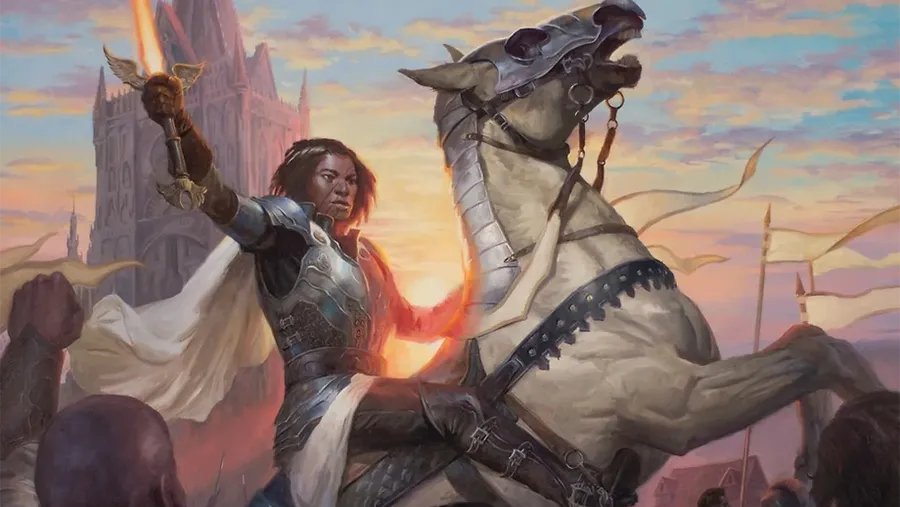
Want a better draw engine? If you’re staying in Jeskai Colors, feel free to pick up a copy of either Bident of Thassa or Recon Mission as a playoff for beating your opponents into submission. The Bident also offers the additional advantage of leaving a lane clear for you to attack your opponent with its activated ability. Alternatively, if you don’t value human life, you can pick up a copy of Skullclamp to make full use of those 1/1 human tokens.
Finally, to round off a better mana base, the deck could benefit from a better ramp package with cards like Smothering Tithe, Oketra’s Monument, Fellwar Stone and maybe even a Pearl or Ruby Medallion.
Beginner-Friendliness
Ultimately, this deck is pretty simple to pilot for a beginner but still offers a key advantage for those attuned to the deck’s playstyle.
The Monarch mechanic can be deceptive at times, and fights to wrestle control over the crown are likely to ensue, so new players should be wary of when to be defensive and offer value trades and when to full-send their board state to threaten lethal on another player. The reminder text of the Monarch isn’t as bad as a mechanic I have yet to get to, so overall it’s alright.
The deck is surprisingly open to board wipes, so knowing when to hold back on developing a board state is key to avoid getting sent back to the stone age for this deck. Counterspells aren’t as frequent in the LOTR preconstructed decks, so players need not worry too much about counter magic.
Not too much handholding in this precon deck, especially since it lets players develop their own board state and achieve any combat-related win condition as they see fit. This deck also adds the monarch mechanic in a very fluid manner, allowing players to build up a defensive board state to protect themselves from getting targeted once they become the monarch.
Final Score:
The Hosts of Mordor | Lord of the Rings
Overview
To have a face commander with such a high mana value, you’d expect Sauron, Lord of the Rings to impact the board quite a bit… and he really does pack the punch! Featuring the newly revamped Amass mechanic, Sauron brings his army and a lil buddy along for the ride every time he gets cast from the Command Zone (or anywhere, for that matter)
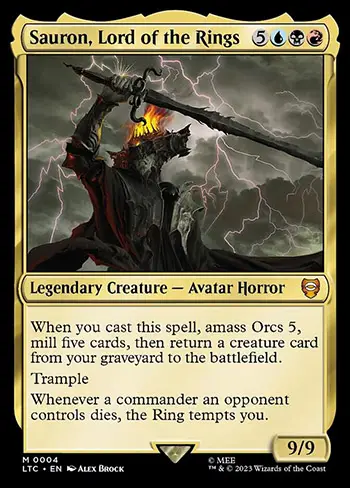
The deck has multiple Graveyard shenanigans-related cards, with the return of the cycling and flashback mechanics, alongside a small “thievery/stealing theme” thrown in to make for spicier gameplay
Playability
The main, big-bad Sauron, Lord of the Rings loves Graveyard shenanigans. Recurring a massive creature sounds amazing!
But with Sauron priced at such a high mana value, there’s a worry that this deck will sit on its hand and durdle itself to death before the pilot can even cast Sauron or recur any of its amazing threats. Many of the cards in the deck can find their own way into the Graveyard with ease – Landcycling and regular Cycling effects – all more than welcome inclusions within the deck, but the deck only has 4 copies of Creature* recursion spells: Reanimate, Living Death, Extract from Darkness and Too Greedily, Too Deep.
I’m well aware the deck can recur Instants and Sorceries, but I’ll address that separately. For a reanimator deck to be worth its weight, I’d expect maybe one or two more Animate Dead/Zombify effects. Flavourful? Maybe not; Useful? Certainly so. The deck shouldn’t have to rely so heavily on its Commander for a simple reanimation.
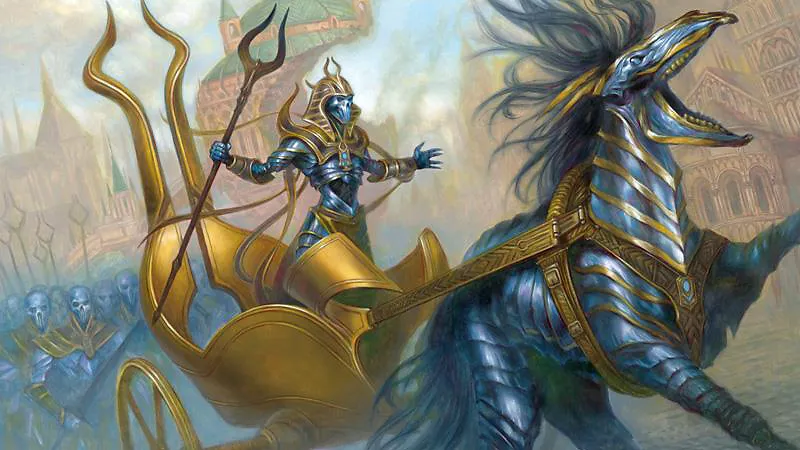
And now let’s look at Sauron’s secondary ability: the Amass mechanic.
Featured on a pitiful 8 cards in the deck, its presence is insufficient to warrant centre stage yet feels like something the design team wanted to explore so much more of. The lack of an Amass payoff or way to grant the army evasion makes the token feel like pure cannon fodder (which is probably what they were going for). I’m looking at cards like Gleaming Overseer, and Eternal Skylord – cards that make the zombie army from WAR an actual threat in a format of keyword soups and cheap removal. It is absolutely soul-crushing to watch your massive Orc Army disappear to a timely Swords to Plowshares or Path to Exile, let alone watch your 14/14 get blocked by a measly 1/1 goblin with no repercussions.
Finally, the spellslinger subtype explored by Saruman feels like a really great idea. Amass payoffs, or maybe the potential for an ever-growing Orc Army with evasive payoffs? But no, instead we get a bunch of random cycling cards with weird shenanigans attached. Boon of the Wish Giver is such an out-of-place reprint – perhaps flavourful, I will not lie – but could easily have been something more impactful like Step Through, or Grave Upheaval? Something that would make the 6 mana price tag worth paying.
Value
Honestly, seeing Reanimate again after its last reprints in Eternal Masters and Jumpstart is such a breath of fresh air. The card had been threatening to climb beyond $20 after Phyrexia: All Will Be One gave us Belzenlok 2.0 in the form of Atraxa, Grand Unifier. Watching it get reprinted (in a Commander precon of all places!) certainly puts a smile on my face.
Other than that, Living Death is a welcome reprint for any Graveyard-matters EDH deck, whilst Basalt Monolith is a stellar inclusion price-wise. Treasure Nabber finally sees its first reprint since it came out in 2018’s precon decks, and with this being its first alternate art print, I foresee this version commanding a decent price tag in the coming months.
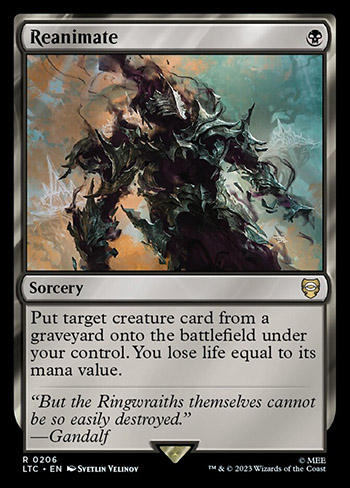
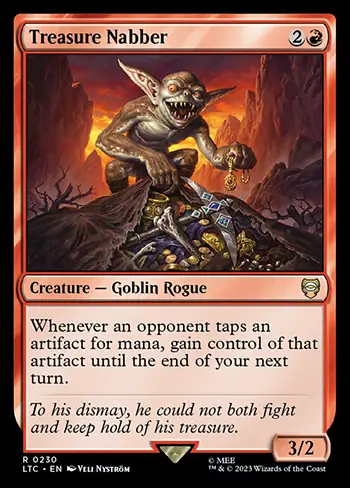
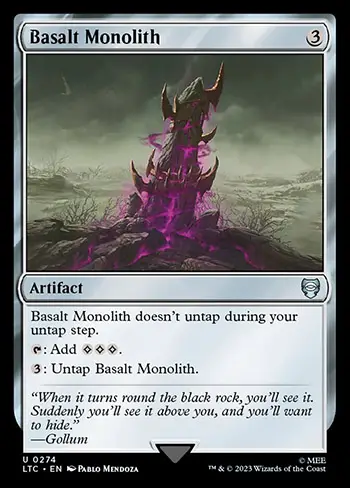
Surprisingly, I think the new cards in the deck will be the ones commanding a majority of its price tag. Spider tribal players would love to add Shelob, Dread Weaver to their ranks, both for its versatility as a Graveyard hate piece and as a “thievery/chaos” enabler.
“Build-Your-Own-Dockside” Cavern Hoard Dragon enables a multitude of combos against artifact decks – I can almost feel the Emry, Lurker of the Loch players quaking in their boots as a 7/7 dragon with haste comes barreling into their face turn 4.
Upgradability
Sauron. Saruman. Grima. 3 different Commanders with 3 different playstyles. All are worthy of a deck each in my opinion. The deck gives players a simple base to work off of, but insufficient cards to fully support a Commander deck around these cards alone.
If you’re here to prioritise Sauron, look for ways to improve your Graveyard recursion package and your ramp capabilities. Grabbing cards like Unexpected Windfall, Big Score and Seize the Spoils will help you fill your Graveyard with the creatures you’re looking to reanimate whilst helping you ramp towards a massive Sauron turn. Cheap counterspells like Arcane Denial and An Offer You Can’t Refuse are important as a protection piece to ensure your commander gets to resolve, and your creature can start wreaking havoc on the battlefield.
Other classic Graveyard fillers include Buried Alive and Entomb, whilst cheap recursion spells include cards like Victimize and potentially Dread Return.
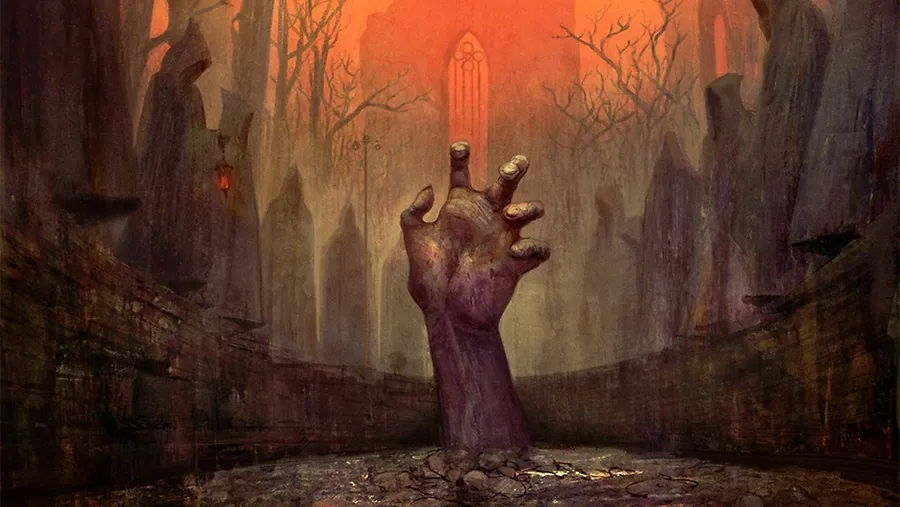
Saruman feels more like a twist on the Grixis (blue-black-red) spellslinger archetype, truly playing into a token army strategy using a massive X/X Orc Army to deal massive damage. Rather than build him as a midrange, control-orientated commander, I feel he would truly shine with a focus on giving his token Army evasion and Haste. Cards like Expedite and Crimson Wisps can easily turn his Orc Army into an OTK engine, while Crash Through, Aqueous Form and Leap can turn the army into a sneaky threat that’ll catch your enemies off guard.
Since Saruman runs off non-Creature spells, your Orc Army could also benefit from the greatest Nike Air Force Ones (i.e. Swiftfoot Boots), alongside providing payoffs for rebuilding after a failed assault on enemy territory. Perhaps having friends like Storm-Kiln Artist, Goblin Electromancer and Archmage Emeritus could assist in our plans…
Grima, Saruman’s Footman‘s upgrade path presents a whole new archetype of thievery and deceit. Grima allows you to yank spells from your opponent’s library like it’s second nature. Key pieces for a good Grima deck would be Strionic Resonator to double your thievery shenanigans, a good haste enabler through Swiftfoot Boots/Lightning Greaves as well as a way to punish your opponents such as Leyline of the Void or Dauthi Voidwalker. A great addition to any Tasha deck, Grima can stand his own even at the helm of his own Commander deck.
Beginner-Friendliness
Honestly, I might be going a little too harsh on this deck.
But I can’t forgive Wizards for adding a Ring mechanic (similar to the Dungeon mechanic of D&D set) into an already complicated preconstructed deck. Keeping track of Ring-Bearers, knowing which ring-bearer has which part of the Ring completed, and then paying attention to a growing Orc Army alongside graveyard shenanigans and Thievery effects just makes for messy gameplay.
This deck tries to have its cake, eat it, regurgitate the cake vomit, eat THAT, then try to rob the local bakery of all its flour, sugar and eggs – this is just too much for a new player.
“Perhaps the handy little token markers will help our dearest incoming players with all the memory work?”
Then what about the Cycling effects and the 3-and-a-half page essays etched onto Shelob, Dread Weaver? Or the Monstrosity of the Lake? What about keeping track of Dethrone? Or remembering which specific card type my creatures should Cycle for?
If you’re looking to give a new player sensory overload with a deck full of shenanigans and diverging game plans, then this is the deck for you!
Else, steer clear.
Final Score:
Food and Fellowship | Lord of the Rings
Overview
Such a cute theme! Partners in the Shire, merrily eating their way to victory! Long has it been since Lifegain has reared its head in a Commander precon deck, and Wizards has certainly learnt their lesson from the good ol’ days of Oloro, Ageless Ascetic. Frodo, Adventurous Hobbit and Sam, Loyal Attendant are the only 2 Commander partner pairing in this set, adding new dimension of power and fun compared to other decks.
With a heavy emphasis on Food tokens and a strong life gain package, the deck uses token generation to remain a cut above the rest, whilst rallying a small army of Halflings towards victory.
Playability
Though mostly unassuming at first, this Abzan (green-white-black) Food tokens deck wants to play the long game, grinding out matches by gaining copious amounts of life whilst accruing value for their payoffs. Sam and Frodo make use of a recurring “Tempted-by-the-Ring” effect to generate value over time through simple combat shenanigans. The additional looting effects introduced, alongside the beneficial evasion provided by the Ring, allow the deck to leverage its mediocre combat ability to its advantage.
I’m incredibly impressed by the pairing of Pippin, Warden of Isengard and Merry, Warden of Isengard, whom I feel should take centre stage as the stars of this token-heavy deck. Merry allows for a very consistent token army plan, generating 1/1s Chatterfang style as you create food tokens, whilst Pippin gives you an egregious Ezuri-style effect slapped onto a Haste enabler, turning your food stockpile into a terrifying late-game threat.

Bilbo, Birthday Celebrant wouldn’t be complete if it wasn’t for the benefit of the plentiful food token generators and food token payoffs. The Ent subpackage doesn’t feel out of place either, with many playing along as gradual life-gain payoffs or food token generators. In a battle of attrition, the Ents are hardy enough to survive any adversity.
Of course, we couldn’t avoid the elephant in the room, Sanguine Bond. A perfect finisher for a life-gain deck, turning food tokens into potent Lightning Bolts late game. Even the board wipe, Toxic Deluge, plays perfectly into the hand of this deck, allowing you to be at a minimal disadvantage as you wipe the board clean of threats.
Though the deck likely gets hosed by a single Sulfuric Vortex, it remains a prime example of a preconstructed deck taking inspiration from Selesnya’s success and making it a uniquely Abzan experience. The stellar removal of black combined with Selesnya’s token generation strategies, taking Attrition to a completely new level. I’d love for the deck to have slightly more amped-up removal like Essence Pulse or perhaps an additional payoff in the vein of Tivash or Dina, but ultimately, for a newer Precon, I feel the Food and Fellowship deck sets a new gold standard.
Either that or I’m completely wrong and this deck durdles like crazy.
Ah well. Hindsight is 20/20 after all.
Value
Toxic Deluge. ‘nuff said. Probably the best reprint across all the Lord of the Rings Commander precon decks. A commander all-star, priced fairly at over $20.
Anguished Unmaking helms another quick $8, and Chromatic Lantern and Birds of Paradise another $5 each. All are veritable staples in the format.
And not to mention the new card The Gaffer, a brand new way for White to draw cards in EDH whilst respecting the boundaries of white card draw. Certainly, a sight to behold.
Upgradability
If you really want to take this Abzan (white-green-black) life gain strategy out of the ballpark, this deck provides a decent springboard, but lacks the oomph most life gain decks have when it comes to finishing opponents. The use of Food tokens for life gain leaves much to be desired, but it’s certainly a flavourful win to eat your opponents to death. Taking a page out of Witherbloom’s book, using threats like Vito, Thorn of the Dusk Rose, Ezzaroot Channeler or perhaps going against the grain using Heliod, Sun-Crowned as a nice Lifelink finisher would allow the deck to get that last push it needs to beat down its opponents. (Alternatively, go for a cheap, one-shot kill with Aetherflux Reservoir and yeet someone out of existence for 50 life)
If token generation is your goal, head for the hills with Primal Vigor, Parallel Lives and Anointed Procession (just remember these are quite pricey)! Watch your enemies cry over the smouldering hole in your wallet. Alternatively, go budget with Thalisse + Camaraderie and create an army in little as you create tokens for creating tokens, which nets you even more tokens! Academy Manufacturer becomes your best friend as the automaton generates Treasure and Clues galore as you gather a stockpile of Food tokens.
If you’re looking to beat up that one guy who brings in an over-powered Commander deck to the newbie’s table, adding in an Exquisite Blood creates an infinite damage combo with Sanguine Bond (albeit a 10 mana, 2-card combo, but a combo nonetheless).
If you want to play Treefolk… unfortunately this deck doesn’t do a very good job of that. Take a page out of Doran’s book and maybe consider building around Fangorn or Colfenor instead. The Mana base of this deck is strong enough to stand on its own, but could easily do with an additional Faeburrow Elder for expedited ramp.
Beginner Friendliness
Again, I rather not have to keep track of arbitrary Ring-Bearers in EDH, where creatures dying left and right are part and parcel of a normal turn rotation.
However, the way this deck operates around the Ring mechanic is absolutely stellar. Ensuring that players will want to keep track of their Ring-Bearer by using creatures with low power that’ll break through enemy defences, in the long run, is an ingenious solution to this problem.
I can’t say that most new players will enjoy the experience of watching the tiny dice on their cards tick up from 16 to 20, but those who prefer a more relaxed, hands-off game of Commander will certainly enjoy the pillow fort aspect of this deck. (Either that or they’re control players in disguise, looking for a new torture method against their playgroup.)
The life gain mechanic is relatively idiot-proof, though understanding when to use Food tokens for life gain and when to use them for other effects like pumping their board state or card draw is certainly a slight learning curve that’ll be rounded out with more games.
Final Score
Elven Council| Lord of the Rings
Overview
One of MTG’s most popular tribes – Elves – is well represented in Lord of the Rings. Rather than ramping to big Creatures or going wide with 100 Creatures, Elven Council‘s Commander Galadriel, Elven Queen relies on voting of the council to generate value from +1/+1 counters, card draw, or the set’s theme mechanic: tempting of the ring.
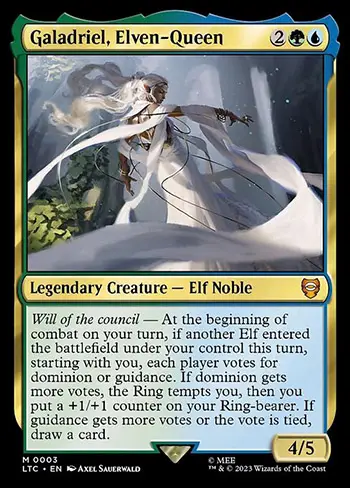
The deck wins by combat and the manipulation of +1/+1 counters, though it does veer into tangents that don’t particularly help the deck. To make up for its clunkiness, it does have some things going for it.
Playability
Much of the deck relies on voting, and as such makes gameplay a lot less predictable and strategic. You might hope for one thing to happen, but opponents might vote a different way for an unexpected outcome.
Despite being an Elf tribal deck, it also packs a few (unnecessary) surprises in its Creature list. You’ve got Insects from Hornet Queen and then you have Radagast, Wizard of Wilds that creates Birds and Beast. None of these really tie in with the Elven Council theme unless its meant to portray the Elves as an all-compassing, inclusive tribe.
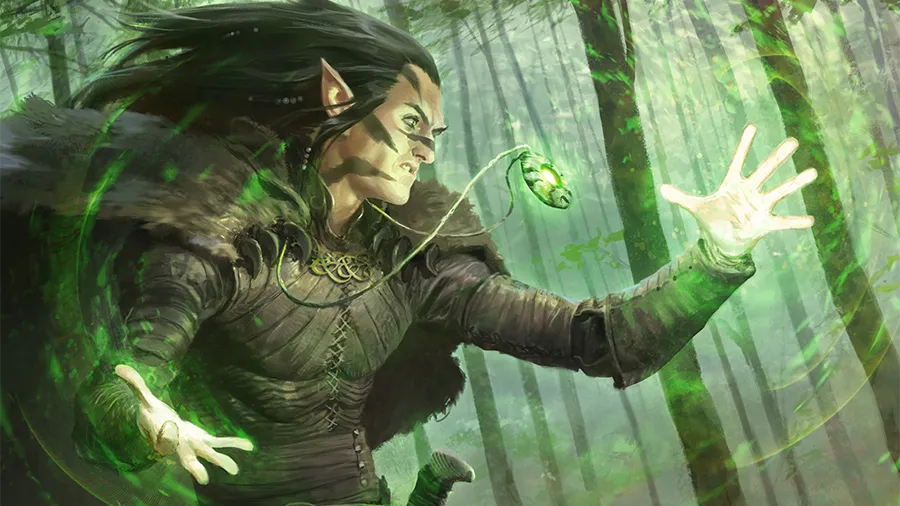
The lower-end of the deck’s Mana curve is thankfully pure Elf ramp, with plenty of staples like Elvish Mystic, Elvish Visionary and Elvish Archdruid keeping you ahead, or at least on par, when it comes to available Mana. The main strategy in the mid to late game is to simply (and patiently) build up your Creatures with +1/+1 counters, except that it doesn’t happen fast enough to withstand other Commander precon decks. It’s best if you can get the new Elf Arwen, Weaver of Hope onto the Battlefield first, as that will get the +1/+1 counters moving much faster.
Value
Elven Council as a deck doesn’t stand out amongst the others in terms of overall value, but it does pack some high-utility reprints that can go into many of your other decks.
First, there’s Heroic Intervention, which has been reprinted a lot more recently, but is a great Commander card that protects all your Permanents. Then there’s the classic Crowd-Land Rejuvenating Springs, effectively a no-downside dual Land for the format.
Swan Song is another crowd-pleaser that many blue control players love to use, and the same goes for the Shroud enabler Lightning Greaves. Being an Artifact, Greaves can slot into literally any Commander deck, and is not as easily available as the cheaper Swiftfoot Boots.
Upgradability
If death by a thousand counters is the path to victory, then we should add in cards that take Elven Council to the next level. Beastmaster Ascension doesn’t add +1/+1 counters, but with so many Elves expected to attack, this Enchantment is a must-have to turn your Creatures into behemoths.
Elrond, Master of Healing from the main set would be an excellent addition to Elven Council. There are already a few cards in the deck that Scry, but just having Elrond around for his second ability means you get to draw more cards and outvalue your opponents.
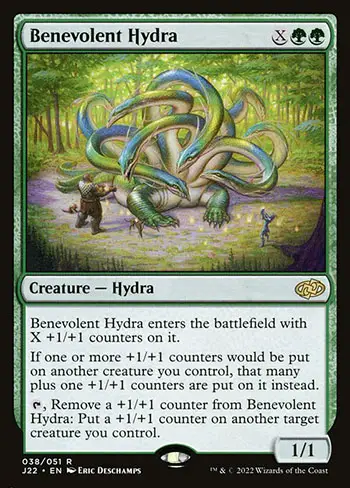
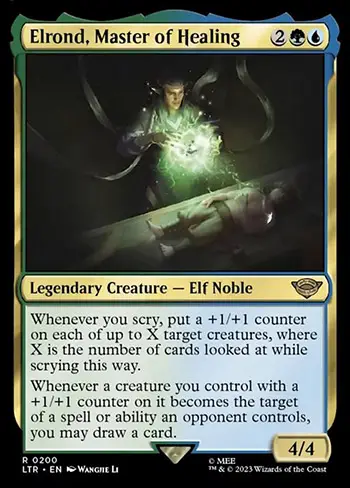
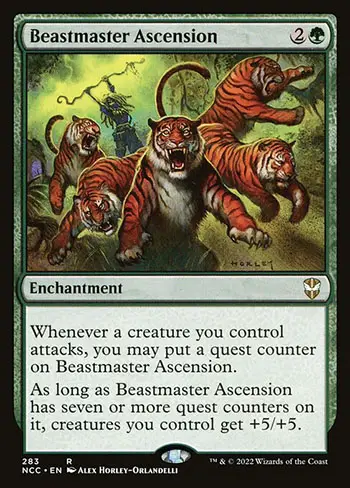
Champion of Lambholt is another common sight for green decks utilising +1/+1 counters. Get the champion big enough and you’ll be dealing unblockable damage to everyone. Also, if you’re going to have non-Elf Creatures in the deck, why not use Hydras that are built just for +1/+1 counter synergies? Benevolent Hydra and Ironscale Hydra are two big boys that you can cast early enough thank to your Mana dorks.
To make way for other cards, you can consider removing Mirkwood Trapper, which doesn’t do much other than it counts as an Elf. We’d also recommend removing Travel Through Caradhras, as ramp at that stage is meaningless in a deck that has lots of early ramp Creatures and spells (Rampant Growth and Cultivate).
Beginner Friendliness
Council voting may be unreliable, but it can be fun for a rather new player. There is some glee involved seeing how others vote to create an unfavourable effect for another of your opponents. Voting also tends to increase the social element of the Commander format, which shouldn’t be overlooked when considering beginner players.
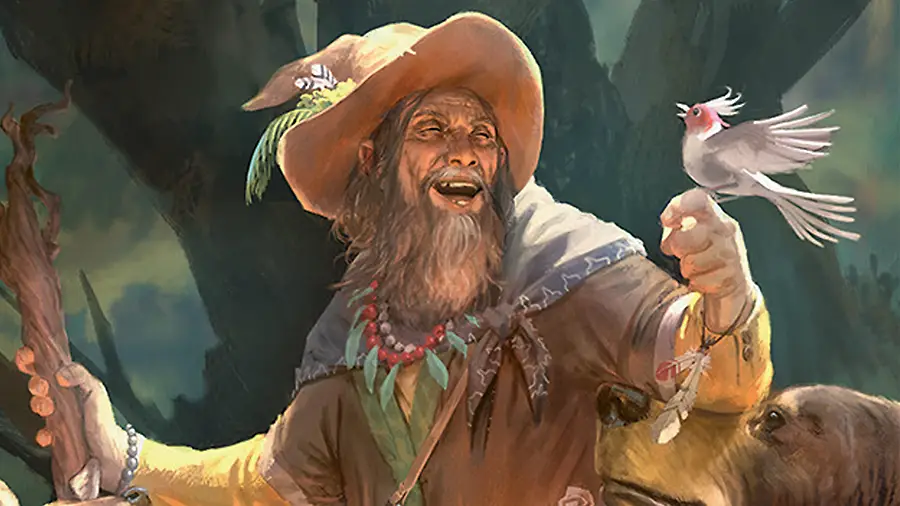
With respects to the other parts of Elven Council’s gameplay, Elf tribal is one of the easiest to pull off, and there’s not much brain power needed to plant one +1/+1 counter after another.
With Elven Council being only 2 colours, it makes Mana fixing a lot more easier, solving a potential bugbear for new players. Considering there are many precon decks that are 3, 4 or even 5 colours, this deck is a winner in that department.

